Prince
The life story of the Buddha begins in Lumbini, near the border of Nepal and India, about 2,600 years ago, where the man Siddharta Gautama was born. Although born a prince, he realized that conditioned experiences could not provide lasting happiness or protection from suffering. After a long spiritual search, he went into deep meditation, where he realized the nature of mind. He achieved the state of unconditional and lasting happiness: the state of enlightenment, of Buddhahood.
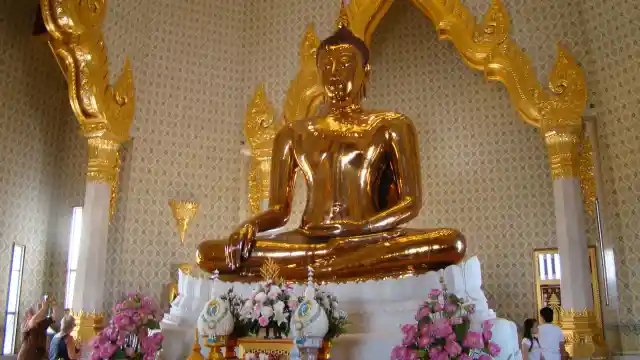

This state of mind is free from disturbing emotions and expresses itself through fearlessness, joy and active compassion. For the rest of his life, the Buddha taught anyone who asked how they could reach the same state. According to his words
“I teach because you and all beings want to have happiness and want to avoid suffering. I teach the way things are”.
Siddhartha Gautama
At the time of the Buddha, India was a very open country spiritually-talking. Every major philosophical view was present in society, and people expected spirituality to influence their daily lives in positive ways. At this time of great potential, Siddhartha Gautama, the future Buddha, was born into a royal family in what is now Nepal, close to the border with India.
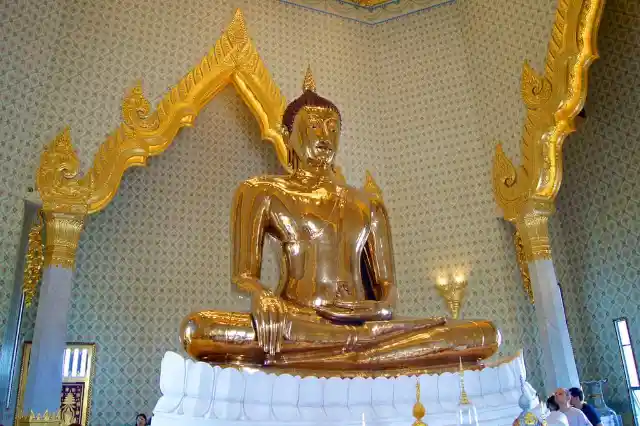
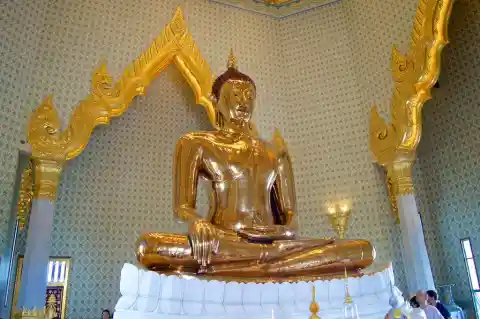
Growing up, the Buddha was exceptionally intelligent and compassionate. Tall, strong, and handsome, the Buddha belonged to the Warrior caste. It was predicted that he would become either a great king or a spiritual leader. Since his parents wanted a powerful ruler for their kingdom, they tried to prevent Siddharta from seeing the unsatisfactory nature of the world.
Meditator
Suddenly, at age 29, he was confronted with impermanence and suffering. On a rare outing from his luxurious palace, he saw someone desperately sick. The next day, he saw a decrepit old man, and finally a dead person. He was very upset to realize that old age, sickness and death would come to everyone he loved. Siddharta had no refuge to offer them.
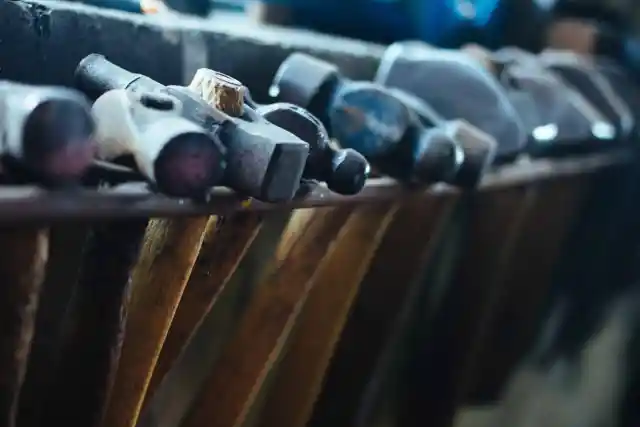

The next morning the prince walked past a meditator who sat in deep absorption. When their eyes met and their minds linked, Siddhartha stopped, mesmerized. In a flash, he realized that the perfection he had been seeking outside must be within the mind itself. Meeting that man gave the future Buddha a first and enticing taste of mind, a true and lasting refuge, which he knew he had to experience himself for the good of all.
Buddha’s Enlightenment
The Buddha decided he had to leave his royal responsibilities and his family in order to realize full enlightenment. He left the palace secretly and set off alone into the forest. Over the next six years, he met many talented meditation teachers and mastered their techniques. He decided to give up his lavish lifestyle and endure poverty.


Finally, at a place called Bodhgaya, the future Buddha decided to remain in meditation until he knew the mind’s true nature and could benefit all beings. After spending six days and nights cutting through mind’s most subtle obstacles, he reached enlightenment on the full moon morning of May, a week before he turned thirty-five, under a Bodhi tree.
The Awakened One
At the moment of full realization, all veils of mixed feelings and stiff ideas dissolved and Buddha experienced the all-encompassing here and now. All separation in time and space disappeared. Past, present, and future, near and far, melted into one radiant state of intuitive bliss. He became timeless, all-pervading awareness. Through every cell in his body, he knew and was everything. He became Buddha, the Awakened One.
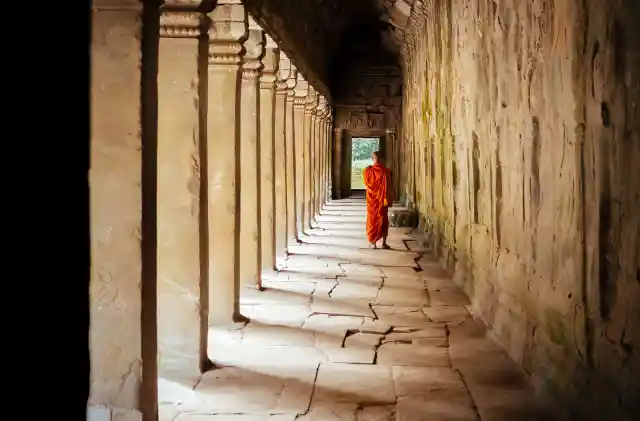

For seven weeks he enjoyed the freedom and tranquillity of liberation. At first, he had no inclination to speak about his realization. He felt would be too difficult for most people to understand. But when, according to legend, Brahma, chief of the three thousand worlds, requested that the Awakened One teach, since there were those “whose eyes were only a little clouded over”, the Buddha agreed.
Teachings
After his enlightenment, Buddha traveled on foot throughout northern India. He taught constantly for forty-five years. People of all castes and professions, from kings to courtesans, were drawn to him. He answered their questions, always pointing towards that which is ultimately real.

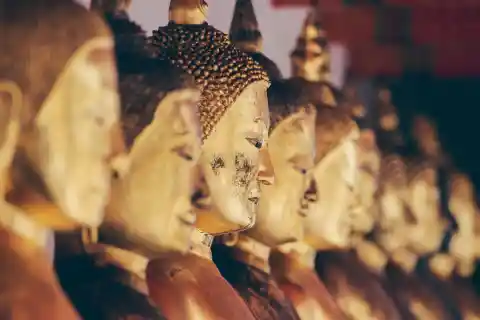
The First Noble Truth of the Buddha stated that all life, all existence, is characterized by dukkha. The Sanskrit word meaning suffering, pain, unsatisfactoriness. Even moments of happiness have a way of turning into pain when we hold onto them, or, once they have passed into memory, they twist the present as the mind makes an inevitable, hopeless attempt to recreate the past.
Direct Insight
The teaching of the Buddha is based on direct insight into the nature of existence. Ir is a radical critique of wishful thinking and the myriad tactics of escapism—whether through political utopianism, psychological therapeutics, simple hedonism, or the theistic salvation of mysticism. Throughout his life, Buddha encouraged his students to question his teachings and confirm them through their own experiences. This non-dogmatic attitude still characterizes Buddhism today.
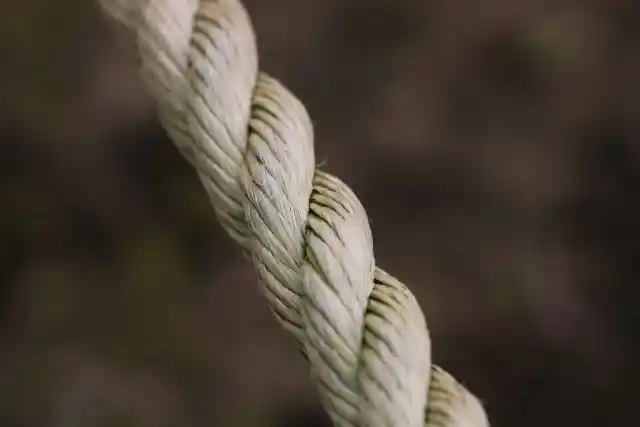

The experience of dukkha, of the working of one’s mind, leads to the Second Noble Truth, the origin of suffering, traditionally described as craving, thirst for pleasure, but also and more fundamentally a thirst for continued existence, as well as nonexistence. It is only when this self is comprehended and seen to be insubstantial that the Third Noble Truth, the cessation of suffering, is realized.
Sangha
The five ascetics who listened to the Buddha ‘s first discourse in the Deer Park became the nucleus of a community, a sangha, of men (women were to enter later) who followed the way the Buddha had described in his Fourth Noble Truth, the Noble Eightfold Path. These bhikshus, or monks, lived simply, owning a bowl, a robe, a needle, a water strainer and a razor, since they shaved their heads as a sign of having left home


For the next forty-nine years, Shakyamuni walked through the villages and towns of India, speaking in the vernacular, using common figures of speech that everyone could understand. He taught a villager to practice mindfulness while drawing water from a well, and when a distraught mother asked him to heal the dead child she carried in her arms, he did not perform a miracle, but instead he instructed her to bring him a mustard seed from a house where no one had ever died.
Death
The Buddha died in the town of Kushinagara, at the age of eighty, having eaten a meal of pork or mushrooms. Some of the assembled monks were despondent, but the Buddha, lying on his side, with his head resting on his right hand, reminded them that everything is impermanent, and advised them to take refuge in themselves and the dharma—the teaching.


The Buddha, while leaving his body at the age of eighty, told his bishkus:
“I can die happily. I have not kept a single teaching hidden in a closed hand. Everything that is useful for you, I have already given. Be your own guiding light“.
First Council
The first rainy season after the Buddha’s parinirvana, it is said that five hundred elders gathered at a mountain cave near Rajagriha, where they held the First Council. Ananda, who had been the Buddha’s attendant, repeated all the discourses, or sutras, he had heard.

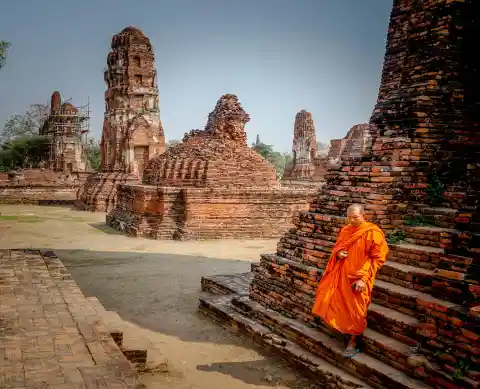
Upali recited the two hundred fifty monastic rules, the Vinaya, while Mahakashyapa recited the Abhidharma, the compendium of Buddhist psychology and metaphysics. These three collections, which were written on palm leaves a few centuries later and known as the Tripitaka, became the basis for all subsequent versions of the Buddhist canon.
Buddha Statue
To the naked and lay eye, this ancient Buddha statue looks like any other ordinary stone effigy that can be located in any temple in the world. However, when some Thai workers damaged the sacred sculpture while moving it, they inadvertently revealed its true worth. What those Thai workers found beneath the stucco exterior, they wouldn’t believe it, as it contained a secret treasure.
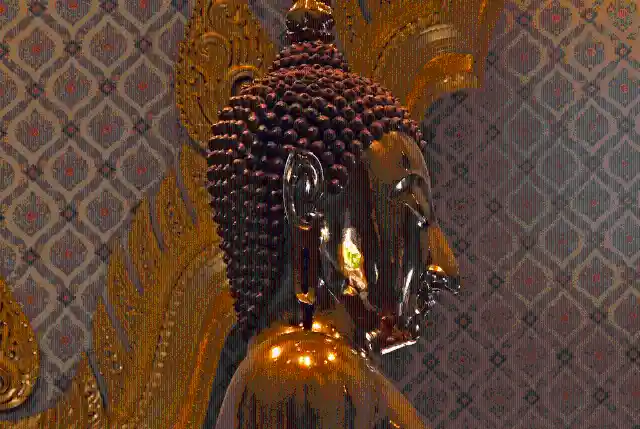

But before we reveal the secret that was found beneath the statue, let us continue with another lesson of history. The history of the Thai kingdom stretches back to the 12th century, in fact. Interestingly, the country had been known as Siam until 1939 and had been an absolute monarchy prior to an uprising in 1932. Yet since then the country has, for the most part, operated as a constitutional monarchy, with a congress voted for by the people.
Revolts
A series of revolts has, however, seen the military hold power at various points over the decades. Nonetheless, no country was able to successfully colonize Thailand. Even during World War II, when the majority of the region fell under Japanese rule, the country was able to retain its sovereignty.
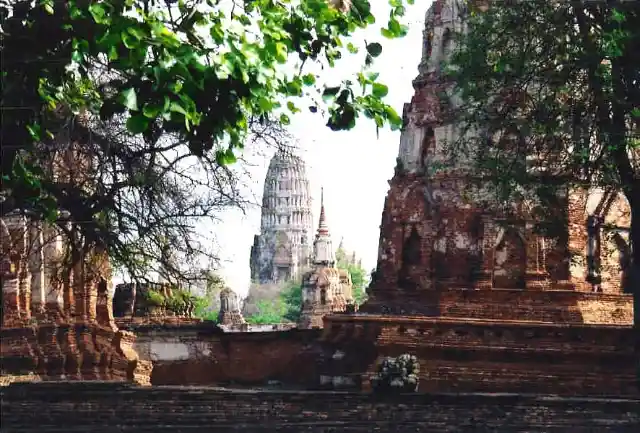
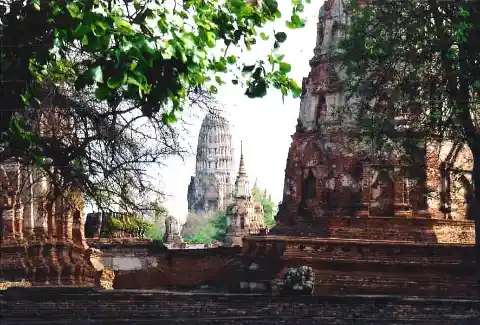
So after Buddha’s death in 300 B.C., parts of his corpse were placed in several monuments, images of the Buddha became very common in temples. In the third century B.C., in fact, Buddhism was a prevalent religion across southern parts of India and the nearby island of Sri Lanka. Around 250 B.C., religion entered Thailand.
Buddhism
Buddhism has been a major part of Thai society for a long time, then. And traditionally the Thai royal family has been viewed as the main champion of the religion, so politics and Buddhism have become increasingly intertwined in recent times. It’s, therefore, safe to say that religion has an impact on almost every part of Thai life and culture.
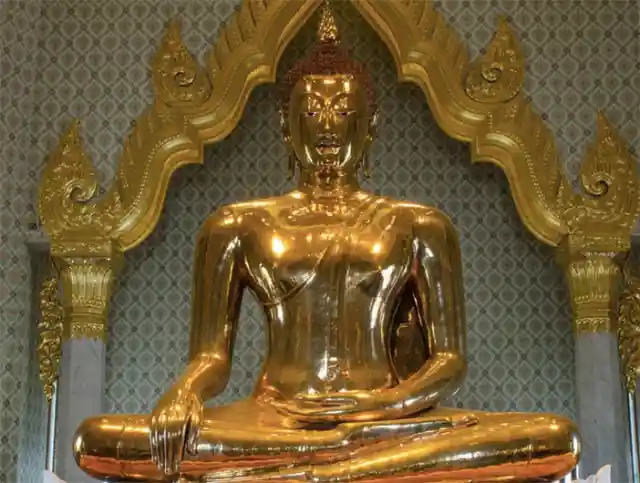

For instance, nowadays it’s thought that close to 95 percent of Thailand’s residents are Buddhist. An additional 5 percent of the populace is Muslim, while the remainder is made up of a number of denominations. According to 2016 statistics, too, the country is home to approximately 40,000 temples and almost 300,000 monks.
Offerings
It’s not just young men who incorporate Buddhism into their everyday lives, however. Many Thai people even dedicate parts of their days to handing offerings to local monks. Others will also undertake acts of kindness, such as giving food to street dogs, in order to gain karma and hopefully have more fruitful existences.
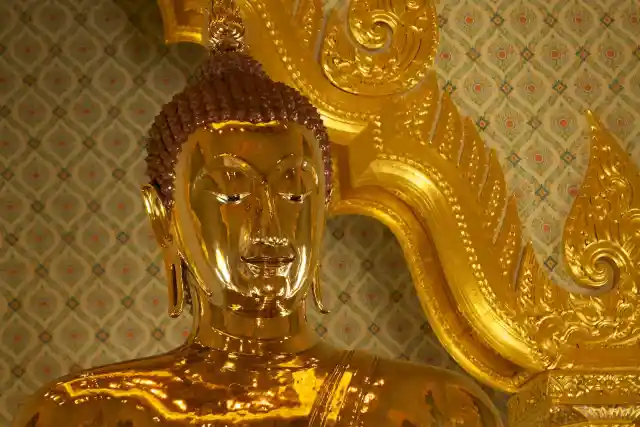

It should be noted that included in that number of monks are almost 60,000 novices. These are young men or boys who live as monks temporarily for anywhere from as little as a few days up to more than a year. In fact, each male in Thailand is expected to become a novice at some point prior to turning 20 in order for them to gain good karma.
Temples
Visitors to Thailand can likely expect to see daily reminders of the influence that Buddhism holds on the country. The capital city of Bangkok alone boasts over 400 temples, for example. And among them is Wat Traimit, which houses the famous Golden Buddha statue.

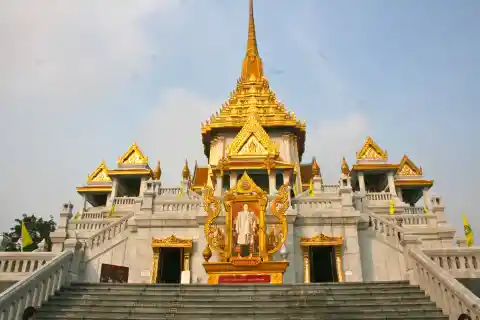
Otherwise known as the Phra Phuttha Maha Suwan Patimakon, the Golden Buddha is a 9-foot-tall depiction of the Enlightened One. It shows Buddha in the Bhumisparsha mudra position, legs crossed with one hand placed upon the ground, as described in the story of Buddha gaining enlightenment.
Ayutthaya
But in reality, the statue has not always been in Wat Traimit. According to historians, it is uncertain when the statue was cast, but it is believed that it dates back to the Sukhothai period (1230s-1430s). It is thought that when the ancient Siamese capital moved to Ayutthaya, the statue was moved too. The statue was probably relocated in the early 1400s. If the statue originated in Ayutthaya, however, it could have been made any time up until the mid-1700s.

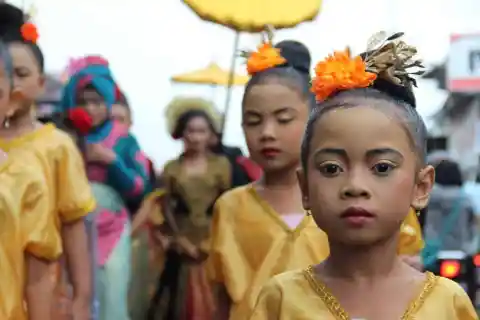
At some point in Ayutthaya, the highly valuable golden statue was covered with a layer of concrete with sparkling glass in an attempt to conceal its true significance and protect it from thieves. Scholars believe that this must certainly have happened before the ancient city of Ayutthaya was captured by Burmese invaders.
Burmese
When the Burmese captured Ayutthaya they removed almost all items of value. Stories abound of golden statues being looted and taken back to Burma to be melted down! This is why many of Ayutthaya’s Buddha statues have no heads today. The stucco disguise, combined with good luck, likely saved the Phra Phuttha Maha Suwana Patimakon Buddha from being lost forever.
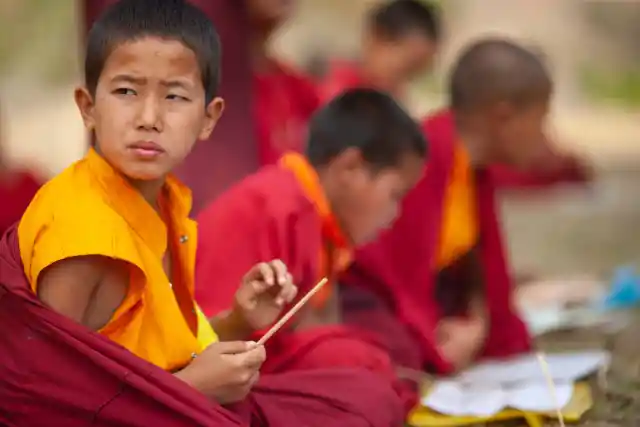
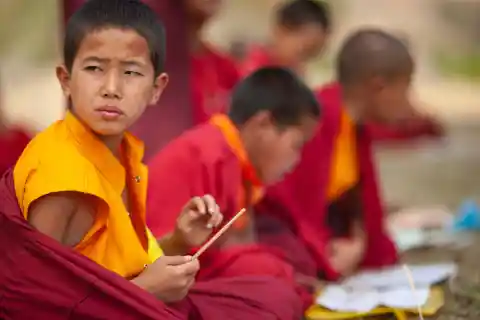
The golden statue stood hidden among the ruins of Ayutthaya for many years. When the new capital was established in Bangkok, the king ordered the relocation of old statues from around the country. And so the golden statue was once again moved, probably at some point in the early 1800s. Still disguised, the statue took pride of place as the main Buddha statue in Bangkok’s Wat Chotanaram. This temple gradually fell into a state of disrepair and disuse, and thus it was closed.
Accident
Due to lack of space, the statue was stored in a basic building with a tin roof. Nobody realized its true importance! Eventually, a new building was constructed for the statue. When the statue was being carried to its new home, it was accidentally damaged. Normally this would be a source of great sadness. In this case, however, the damage revealed gold glinting through the concrete casing. In 1954, the statue’s real splendor was finally revealed!
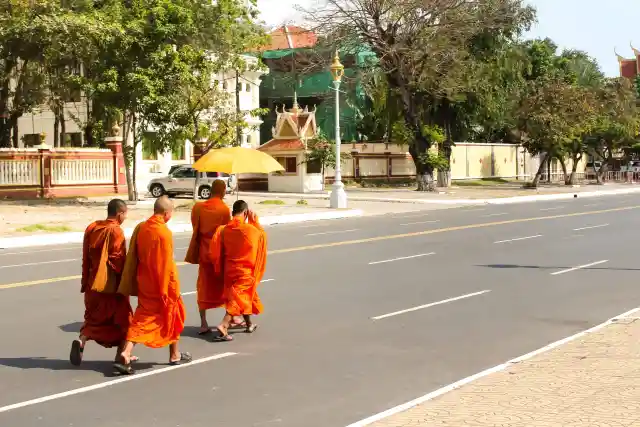
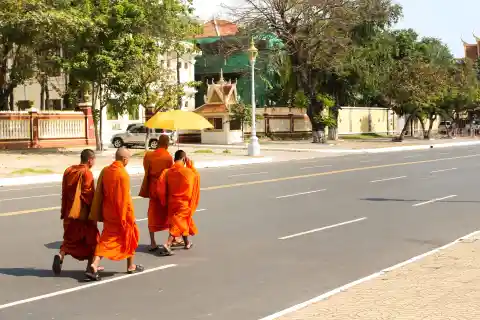
After all the concrete and glass had been carefully removed, the image was displayed with pride, with another new building later created to fully showcase the beautiful statue’s glory. The timing of the discovery, almost 2,500 years after the death of Siddhartha Gautama, combined with the fact that it had managed to remain a secret for so long, has led many Thai Buddhists to see the statue as miraculous.
Depictions
At the pinnacle of the Golden Buddha’s head sits a flame that depicts his spiritual energy. Meanwhile, his elongated earlobes point to the privileged status with which he grew up. The Buddha’s head is elliptical, too, suggesting that the statue dates back to the 13th or 14th century at the time of the Sukhothai Kingdom.
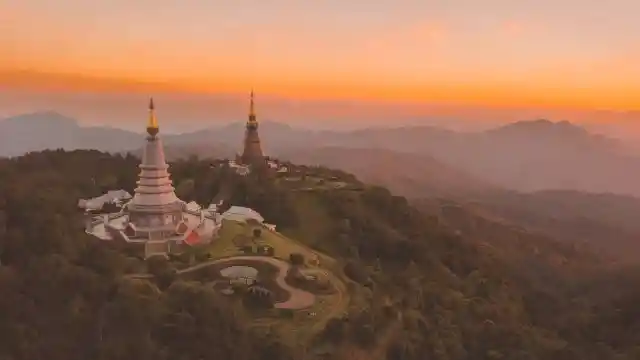
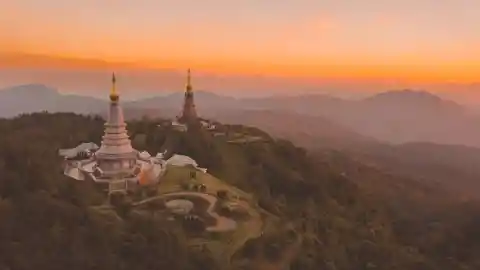
Yet the majority of experts believe that the Golden Buddha was made in India. It’s thought, though, that the statue was originally exhibited in the historic city of Sukhothai, which was the center of the Sukhothai Kingdom. However, the effigy was likely then moved to Ayutthaya sometime around 1400 after it became a dominant force in the region.
Differences
t first glance, mind you, the Golden Buddha actually seems like a fairly typical depiction of the Enlightened One. There are a few distinct differences, however. First of all, it isn’t simply gilded; it’s made of solid gold. The statue, therefore, has a mass of 5.5 tons.


In 1801, after all, King Buddha Yodfa Chulaloke had named Bangkok the new capital of Thailand. And he subsequently set about ensuring that numerous temples were constructed across the city. He also apparently hoped to fill the wats with important relics, and so he decreed that a search of the country should be conducted to locate images of Buddha to bring to Bangkok.
Misfortune
One tale even suggests that workers were so worried about damaging an image of Buddha that they fled the scene. Such objects are highly revered in Thailand, after all. They are actually treated with such respect that it’s usually considered inappropriate to touch or even turn your back on them.

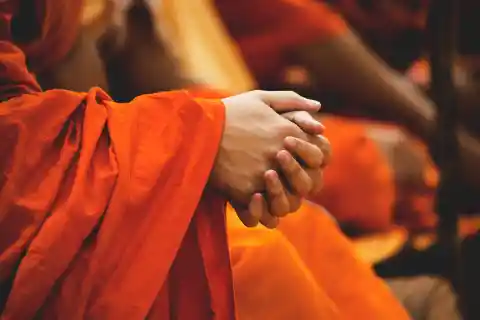
As such, it is understandable that the workers who had overseen the relocation of the Buddha statue might have been terrified that they’d brought misfortune upon themselves. The broken effigy consequently wasn’t discovered until a day later, when a monk apparently came across it lying on the ground in the temple.
Unexpected Discovery
However, this unfortunate event led to what must have been a rather unexpected discovery. That’s because, through a crack in the concrete, the monk could supposedly see a golden statue glinting back at him. And so the unique Buddha was discovered once more.
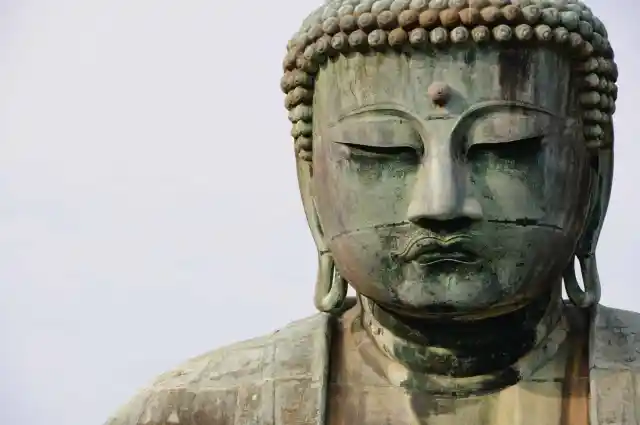
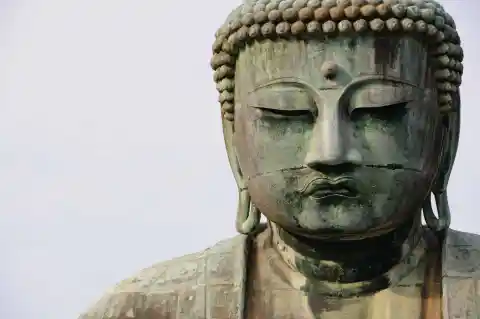
Work consequently began on restoring the statue to its former glory. The stucco coating was carefully chipped away, for instance, to reveal the 18-karat, 9-foot Buddha in all its glory. Restorers also found a key that provided instructions on how to dismantle the statue into its various components and then put it back together again.
Wat Traimit
Once the Golden Buddha had been cleaned up, it was moved to a newly built room in Wat Traimit. There, it would be admired by worshippers for the first time in 200 years. In recognition of the statue’s amazing story, photographs of its restoration and fragments of the stucco were also displayed in the temple.
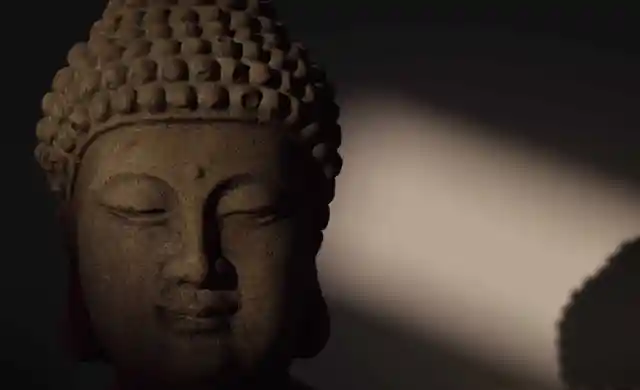
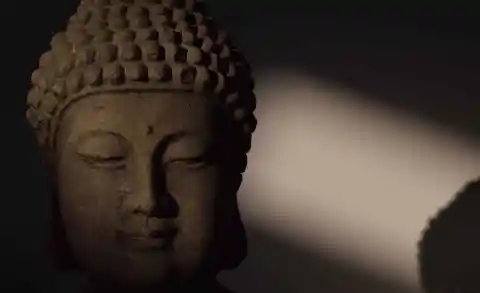
The Golden Buddha is now thought to be worth in the region of $250 million. The most valuable parts of the effigy are actually the topknot and the hair. Together, they weigh around 100 pounds, and the gold they’re made from is 99 percent pure. But with that said, the sculpture would no doubt be deemed priceless by many of Thailand’s Buddhists.
Gautama’s Death Anniversary
After all, the discovery of the Golden Buddha also coincided with the 2,500th anniversary of Gautama’s death. And this only increased the extent to which the incident was covered in the Thai media. Consequently, large numbers of worshippers – and tourists – have since flocked to see the incredible monument.
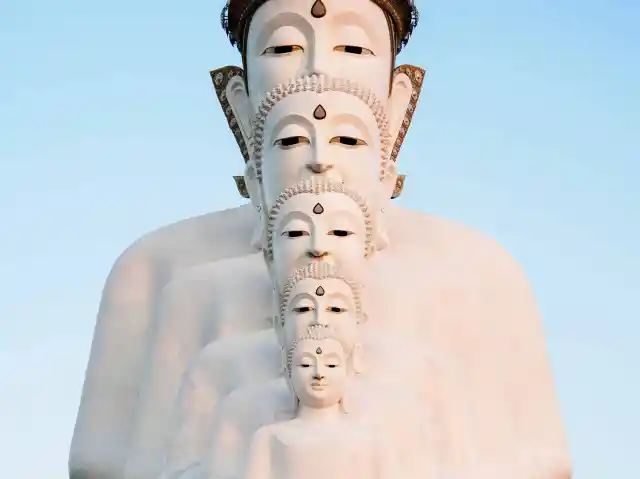
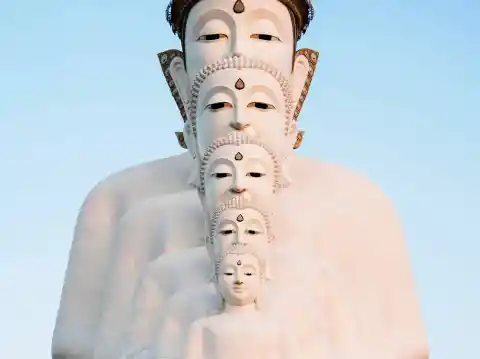
Donations made by visitors in subsequent years have even funded the construction of a new building in which to display the Golden Buddha. So it now sits inside an imposing marble home that spreads across four stories. The second level also houses a small exhibition documenting the statue’s history, and the floor above contains the Yaowarat Chinatown Heritage Center.
Museum
The statue now sits in a new chapel perched high atop a four-story marble-clad ziggurat. The second and third floors of the structure house an interpretive center. The second-floor exhibits cover the history of the Chinese community in Bangkok, starting with a 3D presentation and moving on through slice-of-life scenes of Chinese traders in years gone by.
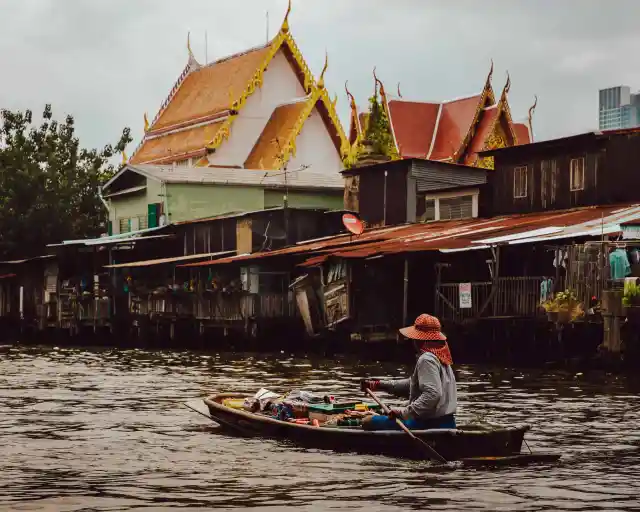

The third-floor museum covers the history of the Golden Buddha image itself. The video presentation at the beginning provides a good brief background on Buddha images in general, as well as the full story of the “subduing Mara” pose for this image. The exhibits cover how the image was made as well as the historical background of how it came to be at Wat Traimit.
TripAdvisor Contributors
Summing up their visit to the Golden Buddha temple in December 2018, TripAdvisor contributor DarD55 from Valparaiso, Indiana, wrote, “This place is amazing! So much to see! When we were there, there were monks there praying with all and blessing everyone. I felt wonderful afterward. This is a must for any tourist”.

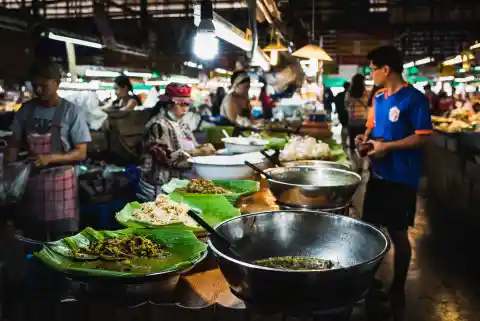
Meanwhile, commenting on their visit in November 2018, Emusdad wrote, “What an amazing find! I think the most amazing thing about this Golden Buddha is that for 650 years it was just a cement Buddha, until some careless forklift driver dropped it, broke it and then they realized, ‘Hey, this thing’s solid gold!’ What an amazing, amazing thing to see”.